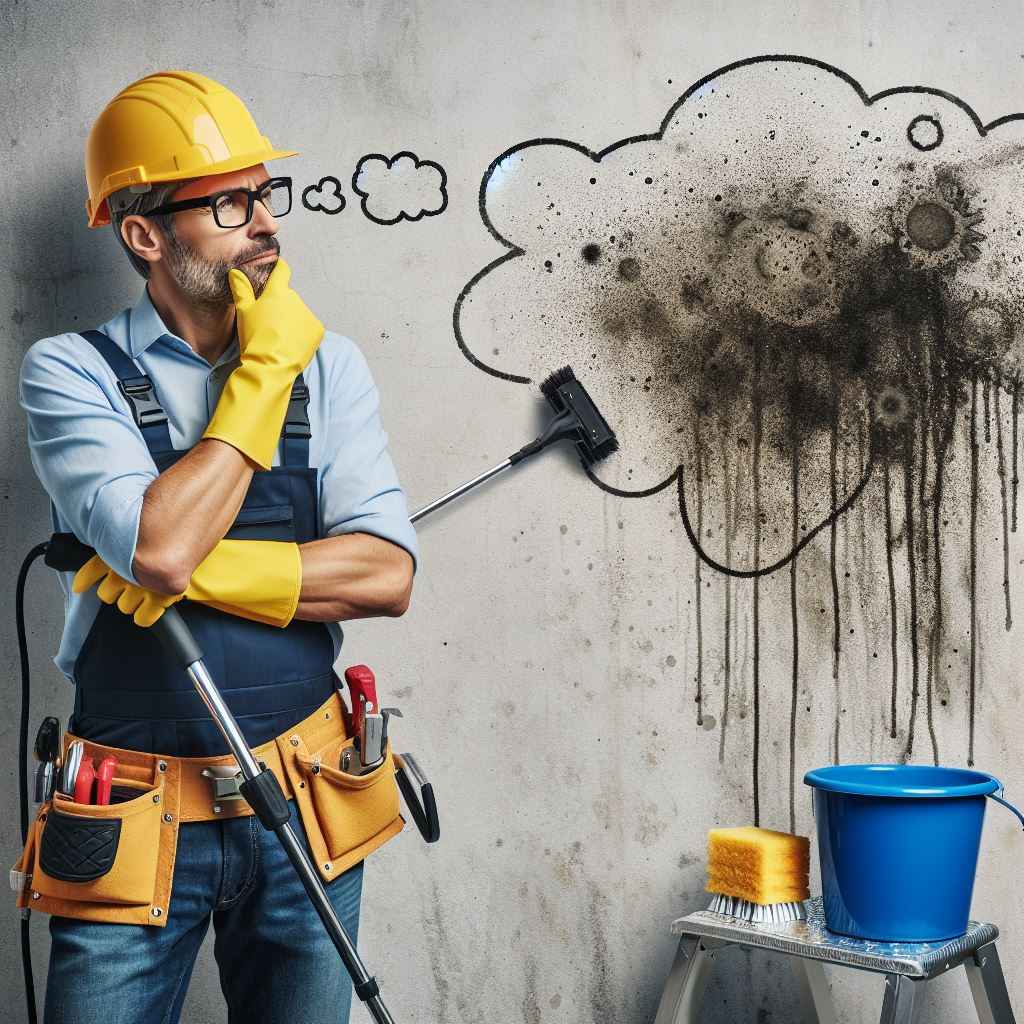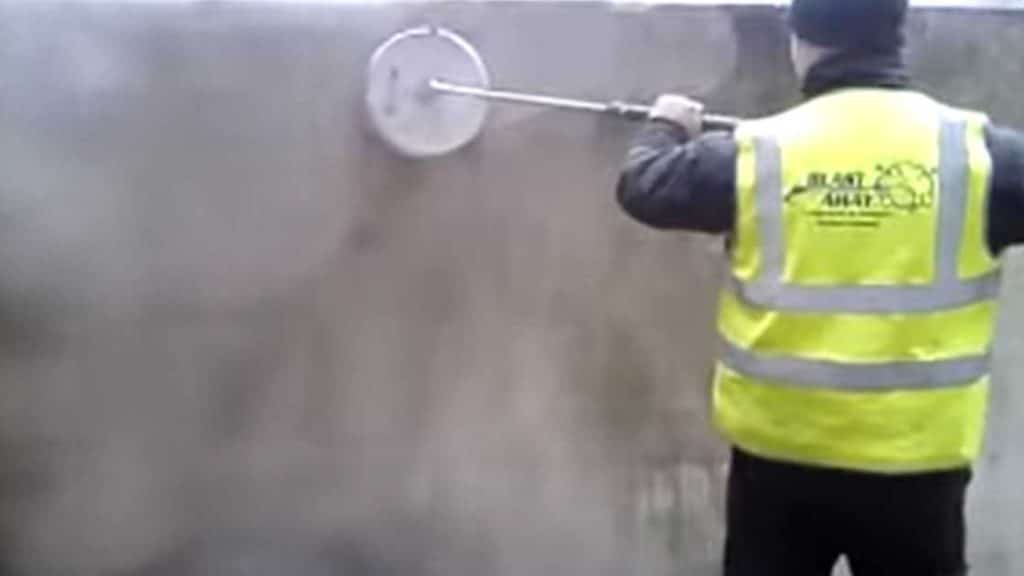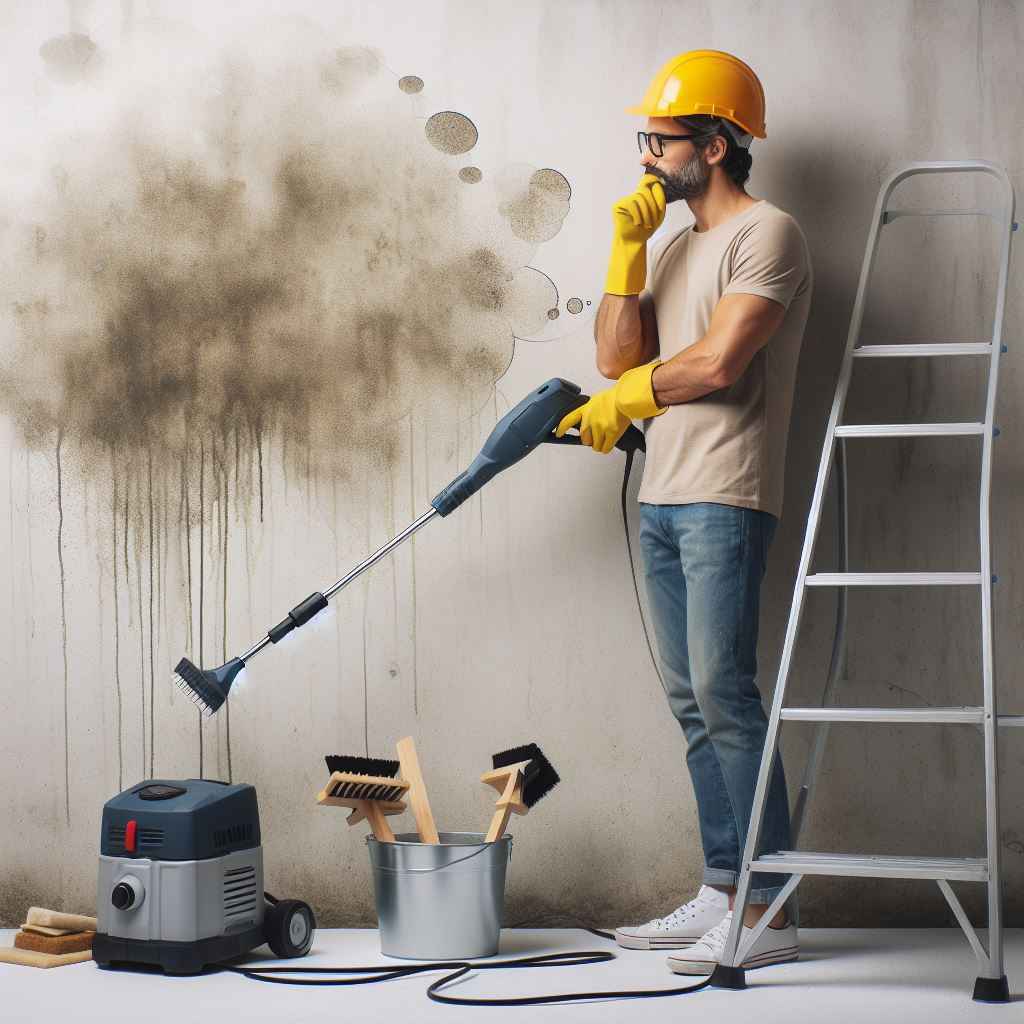To clean concrete walls, apply a mixture of soap and water, scrub with a brush, then rinse. For tougher stains, use a vinegar solution or a commercial concrete cleaner.
To maintain the aesthetic appeal and longevity of your property, it’s crucial to know how to clean concrete walls properly. Over time, these surfaces can accumulate dirt, grime, and mildew, diminishing their appearance.
Whether you’re dealing with an outdoor retaining wall or an interior concrete panel, utilizing the right cleaning method is essential to revitalize the surface. How to Clean Concrete Walls?
Let’s Investigate effective techniques and products to ensure your concrete walls remain in top-notch condition, showcasing the beauty of your property.

It’s important to choose cleaners that won’t damage the concrete while effectively removing unwanted stains. Regular cleaning not only keeps the walls looking fresh but also prevents the buildup of substances that can cause long-term damage.
Engaging in this simple yet vital maintenance task promotes a clean and inviting environment, whether at home or in a commercial setting.
Introduction To Concrete Wall Cleaning
Cleaning concrete walls can seem daunting, but it is essential for maintaining their durability and appearance. Knowing the proper methods and materials makes the process efficient and effective.
In this section, we Investigate the nature of concrete and why keeping your concrete walls clean is essential.
The Nature Of Concrete

Concrete is a sturdy material composed of cement, water, and aggregates like sand or gravel. While its strength makes it a popular choice for walls, concrete is porous.
This means it can absorb contaminants, leading to stains or mildew growth. Insight on this aspect aids in choosing the right cleaning techniques and products.
Importance Of Regular Cleaning For Concrete Walls
Regular cleaning not only preserves the look of concrete walls but also prolongs their lifespan. Dirt accumulation can lead to discoloration and degradation over time. A well-maintained concrete wall resists weathering and maintains its structural integrity longer.
Preparation Before The Cleaning Process

Concrete walls stand strong, but they need a proper cleaning to look their best. Before scrubbing away, get ready the right way. Prep sets the stage for a successful clean.
Safety Measures And Protective Gear
- Wear gloves: Concrete can be rough on the skin.
- Use goggles: Keep dust and debris away from your eyes.
- Cover your mouth: A mask keeps out harmful dust.
Don’t skip on gear: Safety can’t wait. It’s a top priority.
Assembling Cleaning Tools And Materials
- Gather supplies: Cleaner, brushes, and water are must-haves.
- Bring a bucket: It’s handy for mixing solutions.
- Pressure washer: It could save time if the walls are very dirty.
Right tools, better cleaning: Collecting them saves headaches later.
Assessing The Condition Of The Wall
- Look for damage: Cracks or chips may need special care.
- Spot mold or mildew: They need particular attention.
- Identify stains: Some might need a tough cleaner.
Check the wall: Knowing its state helps tailor the approach.
Common Stains And Their Treatments
Concrete walls can gather different stains over time. Insight on how to treat these stains will keep your walls looking clean. Let’s Investigate the most common stains and their treatments.
Graffiti And Paint Removal
Graffiti and paint on concrete walls need special attention.
- Start by washing the area with soapy water and a scrub brush.
- Use a graffiti remover or paint stripper as directed.
- Apply the product and let it sit before scrubbing.
- Rinse thoroughly with water after the paint lifts.
Dealing With Mold And Mildew
Mold and mildew can be harmful to health and unsightly.
- Protect yourself with gloves and a mask.
- Mix 1 part bleach with 3 parts water.
- Spray or brush the mixture onto the mold.
- Allow it to sit for 15 minutes.
- Scrub the area with a brush and rinse well.
Remedies For Oil And Grease Stains
Removing oil and grease requires patience and the right approach.
| Step | Action |
|---|---|
| 1 | Absorb excess oil with kitty litter or sawdust. |
| 2 | Apply a degreaser and let it work. |
| 3 | Scrub with a brush, then rinse off. |
For older stains, repeat the process as needed.
Manual Cleaning Techniques
Cleaning concrete walls can seem daunting, but with the right manual techniques, it’s quite straightforward. These methods don’t require expensive tools or professional help. Let’s drop into some simple yet effective ways to get those walls looking as good as new.
Sweeping And Vacuuming The Walls

Start by removing loose dirt and dust from the wall. A stiff-bristled broom works well for sweeping. For higher areas, use a long-handled broom.
After sweeping, go over the surface with a vacuum cleaner. Use the brush attachment to suck up any remaining debris. This prep step is critical for a clean surface to work on.
Scrubbing With Soapy Water
Next, mix some mild dish soap with warm water. Dip a scrub brush into the soapy mixture and begin to scrub the wall in sections.
Start from the top and work your way down to prevent drips on cleaned areas. Rinse the wall with clean water after scrubbing. This technique removes tougher dirt that sweeping can’t.
Using Specialized Concrete Cleaners
For stubborn stains, a specialized concrete cleaner might be necessary. Choose a product suitable for your type of concrete wall.
Apply the cleaner as directed on the label. Often, this involves letting it sit for some time, then scrubbing and rinsing off. Always wear gloves and eye protection when using chemical cleaners.
Mechanized Cleaning Methods

Dirty concrete walls need a deep clean often. Mechanized Cleaning Methods can make the job quicker. These methods use machines to get rid of dirt, paint, and stains.
For many, this is faster and easier than hand cleaning. This post covers the best ways to clean your concrete walls using machines.
Pressure Washing: When And How To Use It
Pressure washing works well for outdoor walls. It uses water at high speeds to blast dirt away. This is good for most stains.
- Check the wall for cracks before you start.
- Use a nozzle with a wide angle to protect the concrete.
- Start with lower pressure and increase as needed.
- Keep the nozzle moving to avoid damage.
- Wear safety gear to protect yourself.
Sandblasting For Stubborn Stains
Sandblasting is a tough way to clean. It shoots sand particles at the wall to clean it. Use this for tough stains that won’t budge.
- Wear protective gear, as sandblasting can be dangerous.
- Only use this method if other methods don’t work.
- Protect nearby areas from the sand.
- Consider a professional, as this method is powerful.
Considerations For Chemical Cleaners And Solvents
Chemicals can also clean concrete walls. They dissolve dirt and stains. Be careful with these.
| Type of Cleaner | Use Case | Safety Tips |
|---|---|---|
| Acid-based | For rust and efflorescence | Wear gloves and mask; ventilate area |
| Alkaline-based | To remove grease and oil | Use in well-ventilated areas |
| Enzymatic/Bacterial | For organic stains like mold | Safe for indoors; follow instructions |
Note: Test chemicals on a small area first. Use the right cleaner for the right stain. Always follow the maker’s directions.
Maintenance Tips Post-cleaning
So, you’ve taken the time to thoroughly clean your concrete walls. Great job! But remember, keeping them in tip-top shape involves regular maintenance. Here are a few smart tips to ensure long-lasting cleanliness and protection.
Sealing Concrete Walls To Prevent Damage
Concrete is porous, which means it absorbs moisture. To prevent damage, consider sealing your walls with a high-quality concrete sealant.
This creates a barrier, stopping water and stains from sinking in. It’s a simple step that provides long-term benefits.
- Choose the right sealer for your wall type.
- Ensure the wall is clean and dry before application.
- Apply evenly across the surface and allow to cure.
Scheduling Routine Cleaning Sessions
Consistency is key in maintaining the appearance of your concrete walls. Regular cleaning sessions banish grime and keep walls looking fresh.
Mark your calendar for routine clean-ups; even a gentle wash every few months can make a world of difference.
| Frequency | Cleaning Type |
|---|---|
| Monthly | Spot Cleaning |
| Bi-Annual | Deep Cleaning |
Natural Solutions For Keeping Walls Clean
Nature offers some of the best cleaning solutions for your walls. Distilled white vinegar, for example, is a powerhouse for tackling mildew and stains. Mixing baking soda and water creates a gentle scrub for tougher spots.
- Combine equal parts water and vinegar for a simple spray solution.
- Use a soft brush to apply a baking soda paste for stubborn stains.
- Rinse your walls thoroughly with water after using natural cleaners.
Troubleshooting Common Cleaning Challenges

Concrete walls stand strong, but they face cleaning challenges. Stains and streaks can spoil their robust beauty. The right cleaning methods can keep them looking fresh.
Addressing Discoloration And Efflorescence
Discoloration turns walls dull. Use a mild detergent and a soft brush to scrub the surface. Rinse thoroughly with water.
Efflorescence shows as a white, powdery residue. It’s salt pulled from inside the concrete. Brush off the loose deposits. Wash the area with a vinegar solution (one part vinegar to five parts water). Rinse well with water.
Repairing Damage From Improper Cleaning Practices
Harsh chemicals or incorrect methods can harm concrete. For minor scratches or etching, fill with a concrete patching compound. For larger damage, consider sanding or resurfacing.
Diy Vs. Professional Cleaning Services: Making The Choice
Decide based on time, skill, and cost. DIY can save money, but it’s time-consuming and requires effort.
- DIY Cleaning: Cost-effective for small jobs. Use gentle cleaners and tools.
- Professional Services: Best for large or tough stains. Experts bring better tools and deeper knowledge.
Frequently Asked Questions Of How To Clean Concrete Walls
What Is The Best Thing To Clean Concrete With?
The best cleaner for concrete is a mixture of water and mild detergent or a concrete-specific cleaner for tougher stains. Use a scrub brush for effective results.
What Is The Best Cleaner For Painted Concrete Walls?
The best cleaner for painted concrete walls is a mild, pH-neutral soap mixed with water. Use a soft brush or sponge for gentle application. Avoid harsh chemicals to prevent paint damage. Rinse the surface thoroughly with clean water after cleaning.
What Can I Use To Clean My Concrete Basement Walls?
For cleaning concrete basement walls, use a mixture of water and mild detergent. Apply with a scrub brush, rinse well, and allow to air dry. For tough stains, consider a concrete cleaner and follow the manufacturer’s instructions.
How Do You Clean Dirty Painted Concrete?
Sweep the concrete to remove loose dirt. Mix mild detergent with warm water for cleaning. Scrub stains with a stiff-bristle brush dipped in the solution. Rinse thoroughly with clean water. Dry the surface completely to prevent mold growth.
Are concrete walls easy to clean?
Yes, Cleaning concrete walls is easy due to their smooth surfaces; sealed or painted ones resist stains better.
What is the fastest way to clean concrete?
The most efficient method to clean a concrete wall quickly is to use a high-pressure power washer. This powerful tool can effectively remove dirt, grime, and stains from the surface, leaving the concrete looking fresh and rejuvenated in a short amount of time.
Conclusion
Cleaning concrete walls can seem daunting, but it’s manageable with the right approach. By following the steps we’ve outlined, you’ll achieve a spotless, revitalized surface. Remember, regular maintenance keeps these tasks lighter over time. Thank you for reading, and happy cleaning!

